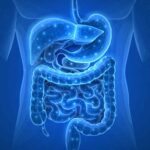• The newly-reconstructed microbial genomes belong to nearly 5,000 species
• Most of the identified species had not yet been described
• Non-Westernized populations have distinctive microbiomes
-
What is already known on this topic
Despite being important for health and disease, most of the microbes populating our body remain uncharacterized. -
What this research adds
By analyzing the DNA of nearly 9,500 samples of body microbes, the researchers identified more than 150,000 microbial genomes. These genomes belong to nearly 5,000 species of bacteria and archaea, 77% of which had not yet been described. Most of the uncharacterized microbes were found in non-Westernized populations. -
Conclusions
The findings increase the possibility to characterize the microbes populating our body and expand our understanding of the human microbiome across different populations.
Researchers have identified more than 150,000 microbial genomes that belong to nearly 5,000 species of bacteria and archaea, most of which had not been yet described. The study, led by Edoardo Pasolli at the University of Trento, in Italy, was published in the journal Cell.
Despite being important for health and disease, most of the microbes populating our body remain uncharacterized. Part of the problem is that many microbes cannot be grown in the lab. However, recent advances allow researchers to extract the total microbial DNA from a variety of samples – from saliva to stool, and then analyze it to reconstruct the genomes of the microbial species present in the samples.
Using this approach, the researchers sequenced and analyzed the DNA of 9,428 samples of body microbes taken from different body sites of people worldwide.
The newly-reconstructed microbial genomes belong to nearly 5,000 species
The team reconstructed a total of 154,723 genomes, which they figured belong to 4,930 species from 22 known microbial families. Of the newly-reconstructed genomes, 675 belonged to Archaea.
Then the researchers looked at the type of genes that the reconstructed genomes contain. Each body site displayed a distinctive set of genes. For example, genomes from the stool of newborns were enriched in genes involved in the metabolism of lactose and other sugars, which characterize the diet of unweaned infants.
Similarly, stool samples from Westernized populations contained enzymes involved in the metabolism of complex carbohydrates, which likely reflect Western dietary habits.
Most of the identified species had not yet been described
Of the 4,930 microbial species identified, 3,796 (77%) had not yet been described. Most of these species belong to samples from non-Westernized populations, likely because fewer studies have analyzed the body microbiome of these populations.
A significant proportion of uncharacterized species (1,153) was found to be abundant in the gut. One newly-identified microbe, which the researchers named “Candidatus Cibiobacter qucibialis,” was particularly common. This species is evolutionarily close to two important members of the gut microbiome, Faecalibacterium and Ruminococcus.
Even among Bacteroides, the most studied microbial species in the gut, the analysis recovered hundreds of previously uncharacterized genomes.
Non-Westernized populations have distinctive microbiomes
Next, the team analyzed the gut microbiome of two rural communities from northeastern Madagascar.
The species present in the body microbiome of these populations were considerably different from those of Westernized populations. For instance, Succinatimonas species were strongly associated with the Madagascar populations and non-Westernized populations. This species is able to degrade D-xylose, a plant-sugar that gut microbes from rural populations are particularly efficient at metabolizing.
Other bacteria prevalent in non-Westernized populations belong to the Firmicutes
and Actinobacteria families, as well as the Elusimicrobia family, which is rarely found in Westernized people.
In contrast, Westernized lifestyles were strongly associated with Bacteroides uniformis and 13 other Bacteroides species.
Microbiomes from Westernized and non-Westernized populations also differed at the functional level. Westernized microbiomes were enriched in genes involved in sulfur and vitamin B12 metabolism, whereas non-Westernized microbiomes were enriched in genes involved in fimbrial functions and degradation of complex pectins.
These differences could be due to diet, genetic, and exposure differences among the two groups, the authors say.
In conclusion, this study expands the collection of microbial genomes associated with the human body by adding to the current catalogue more than 150,000 newly reconstructed genomes. This increases the possibility to characterize the microbes populating our body and expand our understanding of the human microbiome across different populations, the authors say.











